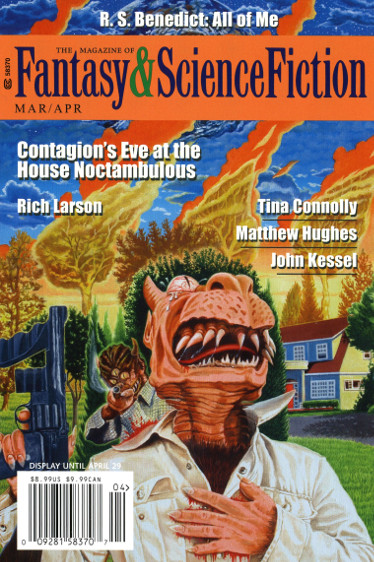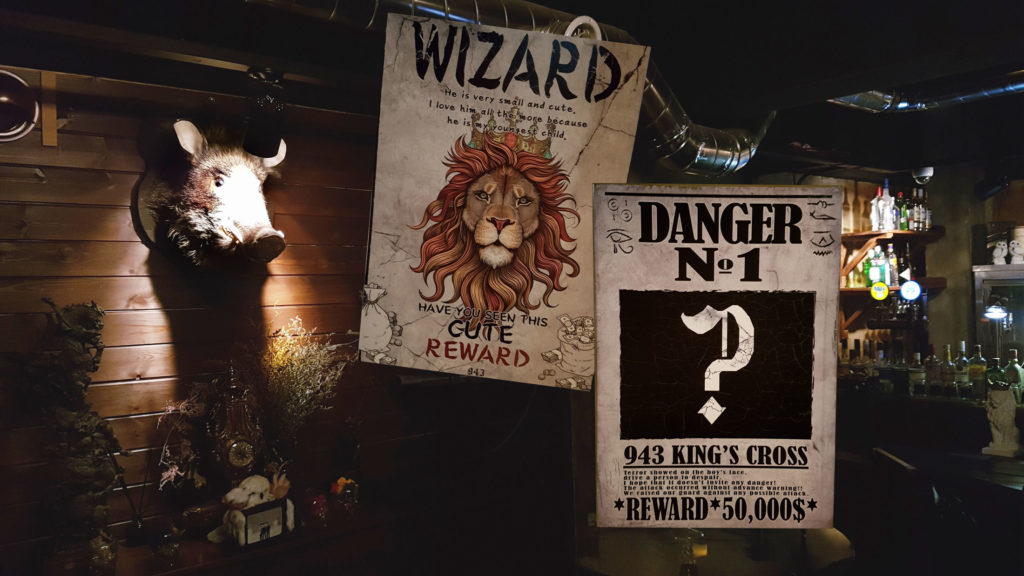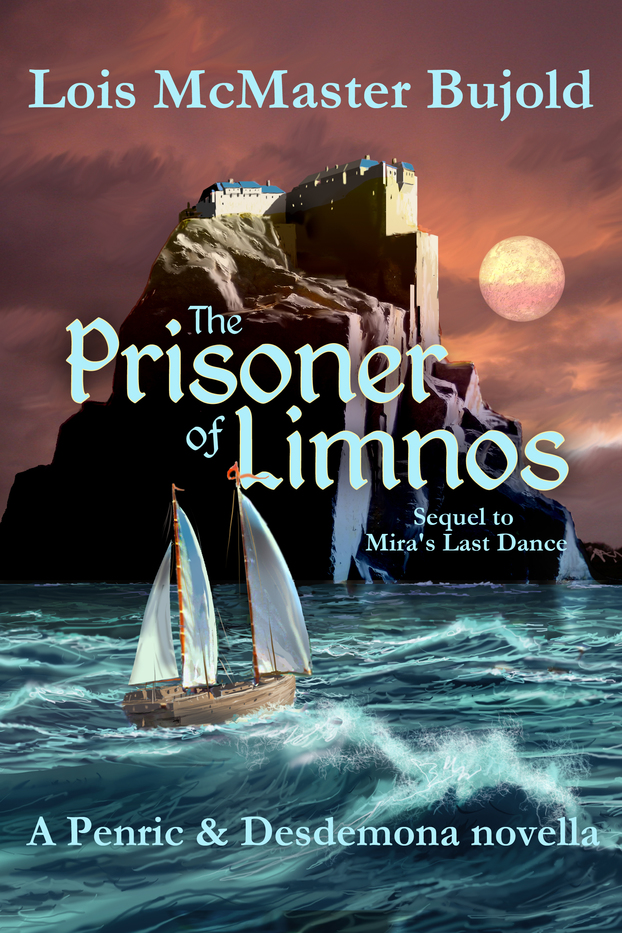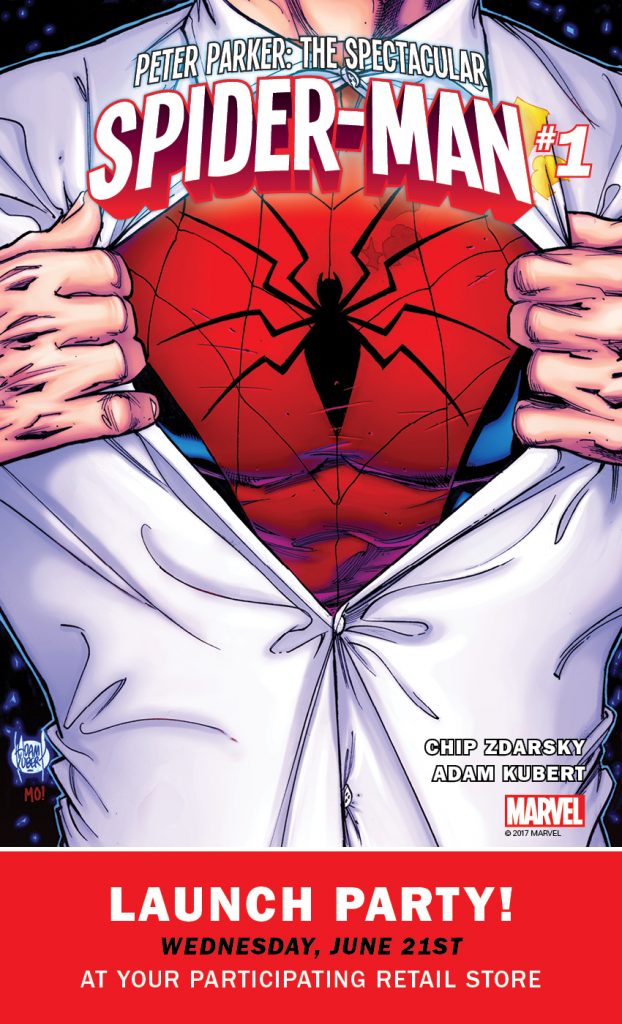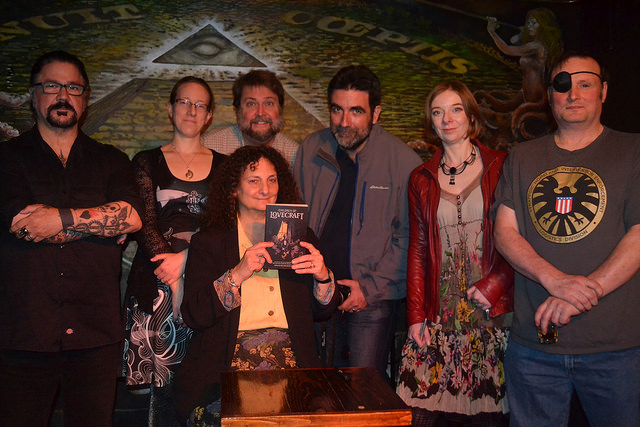(1) DOUBLE DUNE. Deadline reveals there will be a Dune TV series concurrent with the new films (the two back to back). “‘Dune: The Sisterhood’ Series Ordered By WarnerMedia Streaming Service With Denis Villeneuve Directing”.
WarnerMedia has given a straight-to-series order to Dune: The Sisterhood, a drama from Legendary Television based on Frank Herbert’s classic novel Dune and the popular sci-fi franchise it spawned.
The series is designed to co-exist with the Dune feature film, currently in production at Warner Bros., as part of Legendary’s comprehensive plans for Dune which also include video games, digital content packages and comic book series.
Further underlining the symbiotic relationship between the movie and the series, Denis Villeneuve, who is directing and producing the new Dune film, also is set to executive produce the series and direct its pilot episode, with one of the feature’s co-writers, Jon Spaihts set to write the show. It mirrors NBCUniversal ‘s approach to the Purge franchise, which also encompasses a film and TV series franchise.
(2) GREAT FANTASY NOVELS BY WOMEN. The writer and filmmaker Sarah Passos tweeted:
She has gotten over 500 replies, including recommendations from Gaiman and Rothfuss.
(3) MY IMPOSTOR SYNDROME. Once
in a dream I was impersonating a famous fantasy writer and Oxford scholar,
wearing suitably tweedy clothes. “Hello,” I said to a middle-aged
woman, and introduced myself. “I’m J.R.R. Tolkien.”
“Tres
bien,” she answered in French. She was buying it. That much French I
understood. In fact, that was all the French I understood. I was going to need
an excuse to hold the conversation in English. Uh. Uh. So the next thing I said
was, “I’m sorry, but I’ve forgotten all of my French, Old Norse, Greek,
Latin, and 14 other languages I made up myself.”
(4) THROUGH A GLASS, DARKLY. That tech had to be good for something. Variety has learned, “Steven Spielberg Writing Horror Series for Quibi That You Can Only Watch at Night”.
Steven Spielberg is penning a horror series for Quibi that users will only be able to see when their phone knows it’s dark outside, founder Jeffrey Katzenberg said on Sunday.
…Katzenberg said Spielberg has already “written five or six episodes (which Quibi calls “chapters,” like a novel) of a 10- or 12-chapter story.” The program is being developed under the title “Spielberg’s After Dark.” (Spielberg is also developing a revival of his anthology series “Amazing Stories” for another new content programmer, Apple TV Plus.)
(5) CHELSEA CAIN. Comic writer Chelsea Cain has deleted her Twitter-account after a controversy regarding her new comic Man-eaters. At Women Write About Comics, Jameson Hampton analyzes the controversy: “Questioning Chelsea Cain’s Feminist Agenda”.
…Insisting that her book is not trying to imply that all women menstruate is one thing, but the implication that all people who menstruate are women is something else entirely — and plays into a societal habit to assume all trans issues are trans women issues. Compounding that issue is Mags Visaggio, a prominent trans woman in comics who came to Cain’s defense on twitter, insisting the book wasn’t offensive and that Cain should be able to write about “her experience as a cis woman” — again, missing the point that transmasculine people were primarily the ones being harmed.
Specifically, Cain has been back under scrutiny this week after the release of issue #9 of Man-Eaters on June 5th. The controversy? Imagery of propaganda posters in concentration camps featuring the text from fan tweets that had been critical of Cain’s work on the book.
Cain claims that her intention was to “acknowledge the really painful criticisms” that made her feel “worthless and small.”
However, she clearly hasn’t given a lot of thought to the implications of sharing criticism in this way. While the tweets were unattributed in the comic, she has claimed that she “didn’t know” people could still find the original tweets by searching for the text — which feels like a dubious claim, not only because it’s a basic function of Twitter, but also because (as pointed out by CK Stewart) it seems difficult to believe that someone who has experienced so much online harassment is so naive about how online harassment can happen. It’s possible she didn’t consider the nuance of using these words on the walls of a concentration camp, but worth noting that “being more nuanced” was something she explicitly promised to the very writer of the tweets used here. The potential implication that trans folks and their allies are the oppressors and women are the victims is subtext, but it’s hard not to read into it, especially while Cain continues to complain about how the criticisms of her book are mean and hurting her feelings….
(6) THAT’S WHAT THEY SAID. Max Florschutz, in “Being a Better Writer: Voice VS Grammar”, supports this point with some colorful analogies (which you should go there to read).
…I want you to think for a moment, and think hard. Have you ever read a book where a scene or chapter begins without telling you who the viewpoint character of the chapter is, but you can tell anyway because of the voice in the narration? Or read a book where two characters are speaking unattributed, but you’re able to figure out who they are because of their voices?
I have. To both. Because those characters are given strong voices that, while often not grammatically correct, are vivid and real. They have a way of speaking, from use of particular words, to phrases, to even just a cadence or a flow that makes them uniquely identifiable.
That is the power of character voice. To be so vivid and real that even if a character doesn’t offer a name, the reader can figure out who they are simply based on their style of speaking. And since dialogue and narration are the two things our reader will see the most in most books, this makes character voice as powerful a tool as a character walking in screen in a film or show.
(7) SPEAK, MEMORY. The book created for Vonda McIntyre’s memorial, Remembering Vonda, is available for purchase at Lulu.com.

Award-winning SFF author Vonda N. McIntyre died April 1, 2019. The world lost a force of nature, a brilliant, kind, generous, fiercely talented artist. In this volume, friends, colleagues, admirers, fans all pay tribute to a radiant life. McIntyre’s oeuvre includes Dreamsnake (Hugo and Nebula award winner, ’78), The Moon and the Sun (Nebula ’98; a movie based on it is awaiting release); as well as stories, novelizations and tie-ins, including the Star Trek novel The Entropy Effect. She founded the Clarion West workshop and was a “fairy godmother” to hundreds of students; a quiet, tireless feminist, Kentucky-born McIntyre moved to Seattle with her family and became a life-long resident, as well as a prolific creator of crochet topoplogy; McIntyre also collaborated with Ursula K. Le Guin, and was a founding member of the Book View Cafe, an author-owned publishing cooperative. McIntyre both shaped and nurtured the SF/F community; as her friend Jane Hawkins has said “we shall not see her like again.
(8) STEPHEN COLBERT MEETS KING KONG. Just another Tony Award nominated guest….
(9) TODAY’S BIRTHDAYS.
[Compiled by Cat Eldridge.]
- Born June 10, 1922 — Judy Garland. Best remembered for her portrayal of Dorothy Gale in The Wizard of Oz, it was also her only genre role in her tragically short life. (Died 1969.)
- Born June 10, 1928 — Maurice Sendak. In Seattle many years ago, I saw the painted flats he did for The Nutcracker. Truly stunning. Of course, he’s known for Where the Wild Things Are which I think is genre adapted into other media including a film by Spike Jonze. In the Night Kitchen might be genre and it is often on Banned Books lists. (Died 2012.)
- Born June 10, 1937 — Luciana Paluzzi, 82. She’s best known for playing SPECTRE assassin Fiona Volpe in Thunderball. Genre wise, I see she was also in Journey to the Lost City (in the original German, Das indische Grabmal), Hercules, The Green Slime, 1001 Nights, Captain Nemo and the Underwater City and War Goddess (also known as The Amazons and The Bare-Breasted Warriors in its original Italian title). The latter film is online in its entirety on Youtube.
- Born June 10, 1950 — Ed Naha, 69. Among his many genre credits, he was Editor of both Starlog and Fangoria. An even more astonishing genre credit was that he produced Inside Star Trek in 1976 wth Gene Roddenberry, William Shatner, DeForest Kelley and Mark Lenard talking about the series. Fiction wise, he wrote one series as D. B. Drumm, The Traveller series and adapted a number of movies such as Robocop and Robocop 2 under his own name. Way back in the Seventies, he wrote Horrors: From Screen to Scream: An Encyclopedic Guide to the Greatest Horror and Fantasy Films of All Time which alas has not been updated. There are no digital books at iBooks or Kindles for him.
- Born June 10, 1951 — Charles Vess, 68. If you ever need a crash course in learning about his art, go find a copy of Drawing Down the Moon: The Art of Charles Vess which lavishly covers his career up to a decade ago. I’ve got a personally signed copy here along with lots of his artwork. He’s had interesting career including the Spider-Man: Spirits of the Earth graphic novel that he wrote and illustrated. I strongly recommend the illustrated version of Stardust he did with Gaiman as it’s amazing.
- Born June 10, 1952 — Kage Baker. I never met her but we had a decade long conversation via email and once in a while via phone. We were supposed to write a Company Concordance for Golden Gryphon but she got too ill for it to happen. Harry the Space Raptor is now living with her sister Katheleen.(Died 2010.)
- Born June 10, 1953 — Don Maitz, 66 Winner of the Hugo twice for Best Artist and ten Chesley Awards from the Association of Science Fiction and Fantasy Artists. And a World Fantasy Award as well. Yes, I’m impressed. From Asimov to Wolfe, his artwork has adorned the covers of many genre authors. He’s married to Janny Wurtz and their excellent website can be found thisaway.
(10) COMICS SECTION.
- Arlo and Janis have their doubts about going back to the Moon.
(11) DUBLIN 2019 DAY PASSES. Available June 15.
(12) SLOW CHANGE. Unlike Sweden (noted in a Pixel some time ago), “For Many Germans, Cash Is Still King”.
This may be surprising to some. After all, Germany is Europe’s leading economy and famous for technological know-how. But, even while some of its neighbors in Europe and elsewhere are quickly swapping physical money for new pay technologies, many Germans prefer their euro bills. Cash is quick and easy to use, they argue. It provides a clear picture of personal spending, keeps transactions more private and is widely accepted in the country.
“I usually pay cash. This way I have the feeling of keeping track of the money I spend,” says Madeleine Petry, 29, as she shops at a supermarket in Berlin. “Sometimes when I couldn’t make it to the ATM, I use my debit card in the store, but I never use my credit card for shopping in the real world — just for online shopping.”
She is not the only one with this mindset.
A 2017 study by the country’s central bank, Deutsche Bundesbank, said Germans carried an average of 107 euros (over $115 at the 2017 exchange rate) in their wallet. That’s more than three times what the average French person carries (32 euros), according to the European Central Bank. It is also far more than what Americans carry. Three-quarters of respondents in a U.S. Bank survey said they carried less than $50 — and one-quarter said they keep $10 or less in their wallet.
(13) THE ROBOTS RETURN. John Scalzi announces “Love Death + Robots Renewed for Season Two”. The Hollywood Reporter has the story:
Netflix has picked up its series Love, Death and Robots for a second run, and the anthology is bringing aboard an animation veteran to help bring the show to life.
Jennifer Yuh Nelson, the director of Kung Fu Panda 2 and 3, will join the series as supervising director for the second season — or “volume,” as the show’s producers call it. A release date and episode count for the new run has yet to be determined.
(14) HIDE AND SEEK. “Scientists close in on hidden Scottish meteorite crater”, estimated to be 20 times older than Chicxulub.
Scientists think the time has come for a full geophysical survey of The Minch, to see if the Scottish strait is hiding an ancient meteorite crater.
The idea that such a structure lies between the Western Isles and mainland Scotland was first raised back in 2008.
They found evidence on the Highlands coast for the rocky debris that would have been produced by a giant impact.
Now, the team from Oxford and Exeter universities believes it can pinpoint where the space object fell to Earth.
Writing in the Journal of the Geological Society, Dr Ken Amor and colleagues say this location is centred about 15-20km west-northwest of Enard Bay – part way across The Minch towards Stornoway in the Outer Hebrides.
The feature would be buried deep under the seafloor, they add.
(15) ALIEN MUSEUM PIECES. In the Washington Post, John Kelly remembers seeing Alien when it was released 40 years ago and interviews National Air and Space Museum curator Margaret Weitekamp about the artifacts from Alien and Star Trek in the Air and Space Museum’s collections: “‘Alien’ scared me silly 40 years ago. Today, my chest bursts with affection for it.”
In 2003, the Smithsonian’s National Museum of American History welcomed into its collection a 3-foot-tall plaster-of-Paris xenomorph egg that was used as a prop in “Aliens.” It may not be a moon rock or a first lady’s dress, but it’s iconic just the same. The National Air and Space Museum has a set of 103 “Alien” trading cards.
(16) RETURN OF THE BLOB. Watch where you step! ABC7 in LA reports “Tar oozes on to sidewalk, street near La Brea Tar Pits”.
A black, gooey mess was bubbling up out of the ground near the iconic La Brea Tar Pits on Saturday.
The sight was attracting the attention of locals and tourists alike.City workers were on Wilshire Boulevard trying to contain the seepage that was taking over a corner across the street from the historic landmark.
“I’ve seen it bubble up a little bit before, and it’s always fascinating when it happens. Thinking, OK, the tar pits are gonna win this time and take over the world,” Andrea Ross-Greene said laughing. “This is the biggest eruption I’ve seen, and I think it’s pretty cool.”
The earth has been oozing tar and methane gas in the area since pre-historic times.
(17) GRRM Q&A. In Santa Fe at his Jean Cocteau Cinema, George R.R. Martin emcees occasional author events, which they have now started recording for streaming and later viewing. Here are three available on YouTube.
- Marlon James (author of Black Leopard, Red Wolf.)
- Alan Brennert (from The Twilight Zone, author of Daughter of Molokai.)
- Lee Child (Creator of Jack Reacher.)
[Thanks to Cat Eldridge, Chip Hitchcock, John King Tarpinian, Martin Morse Wooster, Mike Kennedy, JJ, Hampus Eckerman, Carl Slaughter, rcade, and Andrew Porter for some of these stories. Title credit goes to File 770 contributing editor of the day Daniel Dern.]



